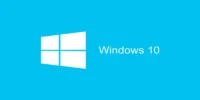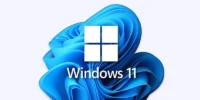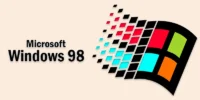What is a Multimedia | Types, Uses, Applications, Tips, Advantages and Disadvantages
Published: 4 Jan 2025
Multimedia
Did you know that over 80% of internet users engage with multimedia daily? Whether it’s a video that grabs your attention, a podcast you can’t stop listening to, or a visually stunning infographic, multimedia turns plain content into something exciting. Imagine learning through virtual reality or promoting your brand with engaging video ads—it’s all possible with multimedia. If boring content feels like a pain point, multimedia is your ultimate solution to captivate, educate, and inspire.
What is Multimedia?
Combining various media, such as text, photos, music, video, and animations, to provide dynamic and captivating information is known as multimedia. It’s used in education, entertainment, marketing, and more to make information easier to understand and more fun to experience.
Define Multimedia
The use of various media, such as text, photos, audio, and video, to produce content or disseminate information is known as multimedia. It combines these elements to engage and inform the audience.
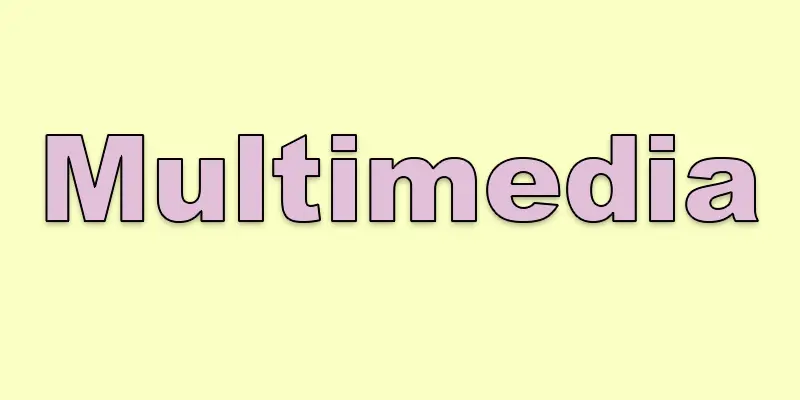
Why multimedia is important in today’s digital world?
- Enhances communication with engaging visuals and sound.
- Simplifies complex ideas for better understanding.
- Boosts learning through interactive and dynamic content.
- Drives audience engagement in marketing and social media.
- Powers innovation in entertainment, education, and business.
How is Multimedia Used?
- Education: Interactive lessons, online courses, and educational videos.
- Entertainment: Movies, video games, music videos, and streaming services.
- Marketing: Social media ads, promotional videos, and brand storytelling.
- Business: Presentations, virtual meetings, and product demos.
- Healthcare: Virtual simulations, medical training videos, and patient education.
- News and Journalism: Multimedia reports, news broadcasts, and documentaries.
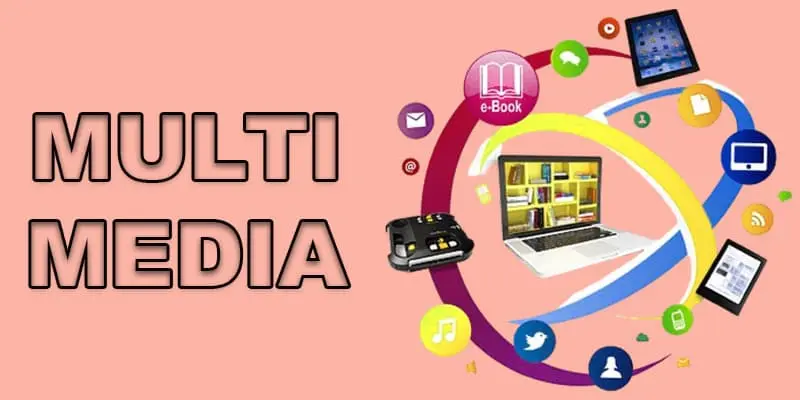
Multimedia Types
Multimedia includes various forms of content that work together to create an engaging experience. Here are the five important multimedia types:
- Text
- Audio
- Images
- Video
- Interactive
Text
- Written content that conveys information clearly and concisely.
- Used in blogs, articles, captions, and social media posts.
- Helps provide context and explanations for other media types.
- Easy to share and accessible on all devices.
- Supports SEO by using keywords and improving search engine rankings.
Audio
- Enhances content with sound, music, or voiceovers.
- Used in podcasts, audiobooks, and music streaming.
- Adds emotional impact and mood to videos and presentations.
- Improves user engagement in interactive content.
- Makes learning more accessible through spoken words and sound cues.
Images
- Visuals that capture attention and convey messages quickly.
- Used in infographics, photos, and illustrations.
- Simplifies complex information through visual representation.
- Enhances content appeal on websites and social media.
- Helps make content more memorable and engaging.
Video
- Combines visuals and audio to tell a story or explain a concept.
- Used in movies, tutorials, advertisements, and social media content.
- Captures audience attention and keeps them engaged.
- Ideal for demonstrating products or showing real-life scenarios.
- Helps improve understanding by providing visual and auditory context.
Interactive
- Allows users to engage and participate actively.
- Used in video games, quizzes, and educational apps.
- Enhances learning by providing hands-on experiences.
- Increases user engagement through feedback and choices.
- Ideal for creating personalized and immersive content.
Applications of Multimedia
Multimedia is widely used in various fields to enhance communication, education, and entertainment. Here are five important applications of multimedia:
- Education
- Entertainment
- Marketing
- Business
- Healthcare
Education
Education is one of the key areas where multimedia plays a significant role. It enhances learning through interactive tools, videos, and e-learning platforms, making complex topics easier to understand. Multimedia helps engage students and improves their overall learning experience.
Entertainment
Entertainment uses multimedia to create engaging experiences through movies, video games, music, and online streaming. It combines visuals, sound, and interactivity to captivate audiences and keep them entertained. Multimedia makes content more immersive and enjoyable.
Marketing
In marketing, multimedia is used to create impactful ads, engaging social media content, and compelling product demonstrations. It combines visuals, audio, and text to capture attention, build brand awareness, and drive customer engagement. Multimedia enhances the overall effectiveness of marketing campaigns.
Business
In business, multimedia is used for presentations, training materials, and video conferences to enhance communication and collaboration. It helps companies convey information clearly and engage employees or clients effectively. Multimedia tools also play a key role in promoting products and services.
Healthcare
In healthcare, multimedia is used for medical training, patient education, and virtual consultations. It helps doctors explain complex procedures through videos and simulations, improving understanding. Multimedia also supports remote care by enabling virtual doctor-patient interactions.
Advantages and Disadvantages of Multimedia
Multimedia has become an essential tool in various fields, offering numerous benefits, but it also comes with some challenges. Let’s explore the advantages and disadvantages of multimedia:
Advantages
- Engages audiences through visuals, sound, and interactivity.
- Simplifies complex information for better understanding.
- Enhances learning experiences and retention.
- Boosts creativity in content creation.
- Increases accessibility through diverse media formats.
Disadvantages
- Can be expensive and time-consuming to create.
- May require technical skills and equipment.
- Overuse can lead to information overload.
- Accessibility issues for people with disabilities.
- Can be distracting if not used appropriately.

10 Important Tips for Using Multimedia
- Keep it Simple: Avoid clutter; focus on the main message.
- Use High-Quality Media: Ensure your images, audio, and videos are clear and professional.
- Balance Text and Media: Don’t overload your content with too much text or visuals.
- Make it Interactive: Engage your audience with interactive elements like quizzes or games.
- Stay Relevant: Use multimedia that matches your topic and audience’s interests.
- Consider Accessibility: Add captions, subtitles, or alternative text for better accessibility.
- Use Multimedia to Support, Not Distract: Ensure your media complements the message, not distract from it.
- Optimize for Speed: Compress media files to reduce loading times without sacrificing quality.
- Keep Mobile Users in Mind: Ensure multimedia is mobile-friendly and easy to view on all devices.
- Be Consistent: Use similar styles, colors, and themes across all your multimedia content.
Conclusion about Multimedia
Text, pictures, sound, video, and interactive components are all combined in multimedia to produce interesting and useful material. It is used across different fields like education, entertainment, marketing, business, and healthcare, offering benefits such as better engagement, simplified communication, and enhanced learning. Understanding the different types and applications of multimedia is essential for creating impactful content and effectively reaching your audience. Knowing these can help you choose the right tools to deliver clear, creative, and engaging experiences.
FAQS – Multimedia Software
The five components of multimedia are text, audio, images, video, and interactivity.
Some of the best tools include Adobe Creative Suite, Canva, iMovie, and Camtasia for creating multimedia content.
To start a career in multimedia, you can take courses in graphic design, video editing, or web development and gain hands-on experience through projects or internships.
Yes, multimedia is highly suitable for small businesses as it can enhance marketing efforts, improve customer engagement, and create professional-looking content at a low cost.
Yes, multimedia is widely used in business for presentations, marketing, training, and enhancing communication with clients and employees.

- Be Respectful
- Stay Relevant
- Stay Positive
- True Feedback
- Encourage Discussion
- Avoid Spamming
- No Fake News
- Don't Copy-Paste
- No Personal Attacks

- Be Respectful
- Stay Relevant
- Stay Positive
- True Feedback
- Encourage Discussion
- Avoid Spamming
- No Fake News
- Don't Copy-Paste
- No Personal Attacks


